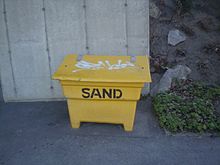 | This is a user sandbox of Luminous744. You can use it for testing or practicing edits. This is not the sandbox where you should draft your assigned article for a dashboard.wikiedu.org course. To find the right sandbox for your assignment, visit your Dashboard course page and follow the Sandbox Draft link for your assigned article in the My Articles section. |
It can be helpful to copy and paste the text below into a sandbox, and apply all of the options directly to this text to see what it does.
Paragraph: This helps you set the style of the text. For example, a header, or plain paragraph text. You can also use it to offset block quotes.
A : Highlight your text, then click here to format it with bold, italics, etc. The "More" options allows you to underline, {add code snippets}, and change language keyboards.
Links: The chain button allows you to link your text. Highlight the word, and push the button. The visual editor will automatically suggest related Wikipedia articles for that word or phrase. This is a great way to connect your article to more Wikipedia content. You only have to link important words once, usually during the first time they appear. If you want to link to pages outside of Wikipedia (for an "external links" section, for example) click on the "External link" tab.
Cite: The citation tool in the visual editor helps format your citations. You can simply paste a DOI or URL, and the visual editor will try to sort out all of the fields you need. Be sure to review it, however, and apply missing fields manually (if you know them). You can also add books, journals, news, and websites manually. That opens up a quick guide for inputting your citations. Finally, you can click the "re-use" tab if you've already added a source and just want to cite it again.
- Bullets: To add bullet points or a numbered list, click here.

Ω The final tab allows you to add special characters, such as those found in non-English words, scientific notation, and a handful of language extensions.
Cheatsheet for editing: https://en.wikipedia.org/wiki/Help:Cheatsheet
- Note to self: maybe a list of idol group concept debuts/comebacks would be more relevant here? Luminous744 (talk) 13:16, 19 March 2018 (UTC)
- The issue of creating a concepts page is that it's highly subjective on fan/public interpretation, so maybe a list of groups with their announced/confirmed concepts would be more likely to be a new page? Luminous744 (talk) 13:16, 19 March 2018 (UTC)
Idol Group Concepts
editIdol group concepts are the type of visual and musical theme that idol groups utilize during their debut or comeback. This concept can change between debuts and are usually different between boy groups and girl groups. New idol groups will often debut with a concept well-known to the market to secure a successful first debut. Concepts can be divided between general concepts and theme concepts. A group can perform with any mix of concepts and there can be multiple subcategories underneath any one concept.
Selected Boy Group Concepts
edit- Cool
- Swag
- Badass/Powerful
- Tough
- Cute
- Innocent
- Playful
Selected Girl Group Concepts
edit- Cute
- Innocent
- Playful
- Sexy
- Badass/Girl-crush
Selected Theme Concepts
edit- School
- Athletics
- Fantasy
- Fairytale
- Band
- Party
- Uniform
- Suit/Classy
- Holiday/Seasonal
- Genre
- Hip-hop
- Disco
- Retro/Vintage
- Urban
References
edithttps://www.theodysseyonline.com/12-concepts-styles-korean-pop-stars
Final Draft
editMarketing
editMany agencies have presented new idol groups to an audience through a "debut showcase", which consists of online marketing and television broadcast promotions as opposed to radio.[1] Groups are given a name and a "concept," along with a marketing hook. These concepts are the type of visual and musical theme that idol groups utilize during their debut or comeback.[citation needed] Concepts can change between debuts and fans often distinguish between boy group concepts and girl group concepts. Concepts can be divided between general concepts and theme concepts, such as cute or fantasy. New idol groups will often debut with a concept well-known to the market to secure a successful first debut. Sometimes sub-units or sub-groups are formed among existing members. An example subgroup is Super Junior-K.R.Y. which consists of members Kyuhyun, Ryeowook, and Yesung, and Super Junior-M, which became one of the best-selling K-pop subgroups in China.[2]
- ^ Cite error: The named reference
npr 20121012was invoked but never defined (see the help page). - ^ Kallen, Stuart A. (2014). K-Pop: Korea's Musical Explosion. Twenty-First Century Books. p. 37–38. ISBN 9781467720427.